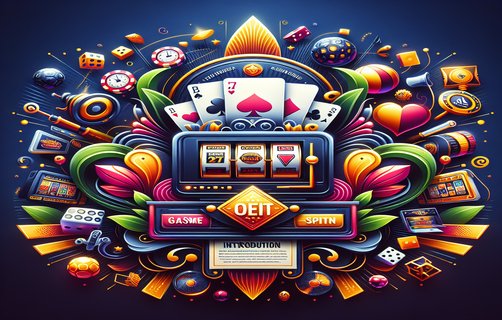Mastering Rummy: The Strategic Path to Victory
रम्मी में महारत: जीत की रणनीतिक राह
Rummy, a fascinating game of skill and chance, requires players to engage in logical reasoning, keen analysis, and strategic planning. To truly excel, one must not only understand the game mechanics but also predict the opponents' moves and reactions. At the heart of mastering Rummy lies the logical reaction to each situation. Players need to weigh their options carefully, deciding whether to draw a card, discard a card, or go for a meld—it’s a constant tug-of-war between risk and reward.
Calculating expected value becomes essential in this dance of wits. Each choice carries potential gains and losses, which can be quantified to guide decision-making. For example, if the probability of completing a meld increases with certain cards while diminishing with others, players are required to adapt their strategies accordingly. This quantification leads to winning outcomes more often than not, especially in games where the stakes are high.
Opponent analysis patterns are another critical aspect of Rummy strategy. By observing opponents' habits—what cards they tend to pick, what they discard, and when they choose to meld—players can better anticipate their actions. This analysis extends to defining hand ranges, estimating which combinations of cards their opponents may be holding, and how close they are to completing their own melds.
Pacing advantage further adds a layer of strategy. A player who can control the speed of the game can influence the actions of their opponents. Slower gameplay may lead to more thoughtful decisions, while a faster pace may induce errors. Mastery of pacing requires both confidence and awareness of the tempo, striking a balance that disrupts opponents' rhythms.
Moreover, assessing opponent hand odds is vital. Considering how many cards are still in play, what has been discarded, and what high-value cards are out can inform a player’s decisions. A keen player understands the odds of drawing a beneficial card against those that might hinder their progress, using this information to dictate their gameplay.
By integrating all these elements—logical reactions, expected value calculations, opponent analysis, pacing advantage, and hand odds—players can elevate their Rummy game. Each session transforms into a rich tapestry of strategic maneuvers, confidence, and adaptability, transforming a mere pastime into an art of warfare.

रम्मी, कौशल और अवसर का एक आकर्षक खेल है, जिसमें खिलाड़ियों को तार्किक तर्क, तीव्र विश्लेषण, और रणनीतिक योजना में संलग्न होना पड़ता है। वास्तव में उत्कृष्टता प्राप्त करने के लिए, न केवल खेल के तंत्र को समझना जरूरी है, बल्कि विरोधियों की चालों और प्रतिक्रियाओं का पूर्वानुमान भी लगाना पड़ता है। रम्मी में महारत के दिल में हर स्थिति में तार्किक प्रतिक्रिया देने की आवश्यकता होती है। खिलाड़ियों को अपने विकल्पों को सावधानी से तौलना चाहिए, यह तय करना चाहिए कि उन्हें कार्ड लेना है, कार्ड छोड़ना है, या मील्ड के लिए जाना है—यह जोखिम और पुरस्कार के बीच एक निरंतर खींचतान है।

अपेक्षित मूल्य की गणना इस बुद्धि के नृत्य में आवश्यक हो जाती है। प्रत्येक विकल्प में संभावित लाभ और हानि होती है, जिन्हें निर्णय लेने में मार्गदर्शक के रूप में गणना किया जा सकता है। उदाहरण के लिए, यदि कुछ कार्डों के साथ मील्ड पूरा करने की संभावना बढ़ती है, जबकि दूसरों के साथ घटती है, तो खिलाड़ियों को अपनी रणनीतियों को तदनुसार अनुकूलित करने की आवश्यकता होती है। यह मात्रात्मककरण अक्सर जीतने वाले परिणामों की ओर ले जाता है, विशेष रूप से उन खेलों में जहां दांव अधिक होते हैं।
विरोधी विश्लेषण पैटर्न रम्मी रणनीति का एक और महत्वपूर्ण पहलू है। विरोधियों की आदतों पर ध्यान देकर—वे कौन से कार्ड उठाते हैं, क्या वे छोड़ते हैं, और कब मील्ड करते हैं—खिलाड़ी उनकी क्रियाओं की बेहतर भविष्यवाणी कर सकते हैं। यह विश्लेषण हाथ की श्रेणियों की परिभाषा तक बढ़ता है, यह अनुमान लगाना कि उनके विरोधी कौन सी कार्ड कॉंबिनेशन रख सकते हैं और वे अपने मील्ड को पूरा करने के कितने करीब हैं।
गति का लाभ रणनीति में एक और परत जोड़ता है। एक खिलाड़ी जो खेल की गति को नियंत्रित कर सकता है, वह अपने विरोधियों की क्रियाओं को प्रभावित कर सकता है। धीमी गेमप्ले अधिक विचारशील निर्णयों की ओर ले जा सकती है, जबकि तेजी से खेल होने पर गलतियां होने की संभावना हो सकती है। गति में महारत हासिल करने के लिए आत्मविश्वास और ताल का जागरूकता आवश्यक है, एक संतुलन खोजने में जो विरोधियों की लय को बाधित करता है।
अंत में, विरोधी हाथ की संभावनाओं का आकलन करना बहुत महत्वपूर्ण है। यह विचार करते हुए कि खेल में कितने कार्ड अभी भी प्रदर्शन पर हैं, क्या डाला गया है, और कौन से उच्च-मूल्य वाले कार्ड बाहर हो गए हैं, किसी खिलाड़ी के निर्णयों को सूचित कर सकता है। एक कुशल खिलाड़ी लाभकारी कार्ड को खींचने के खिलाफ उन कार्डों की संभावनाओं को समझता है, जो उनके आगे बढ़ने में बाधा डाल सकते हैं, और इस जानकारी का उपयोग अपने खेल के लिए दिशा-निर्देश करने के लिए करता है।
इन सभी तत्वों को एकीकृत करके—तार्किक प्रतिक्रियाएँ, अपेक्षित मूल्य गणनाएँ, विरोधी विश्लेषण, गति का लाभ, और हाथ के सौदे—खिलाड़ी अपने रम्मी खेल को ऊंचा कर सकते हैं। प्रत्येक सत्र रणनीतिक चालों, आत्मविश्वास, और अनुकूलनशीलता के एक समृद्ध टेपेस्ट्री में परिवर्तित हो जाता है, एक साधारण शौक को जंग की कला में बदल देता है।

comments
RummyMaster99
This article really breaks down the complexities of Rummy in an engaging way!
CardShark7
I love the focus on opponent analysis patterns. It’s so crucial to winning!
AceOfSpades
Great tips on pacing advantage! I’ll definitely try to control the tempo next game.
StrategicGamer
The expected value calculation is a game-changer. Thanks for sharing!
PlayToWin
Amazing insights on hand odds! Never thought about it that way.
DeckDealer
Can’t wait to implement these strategies into my next Rummy session!